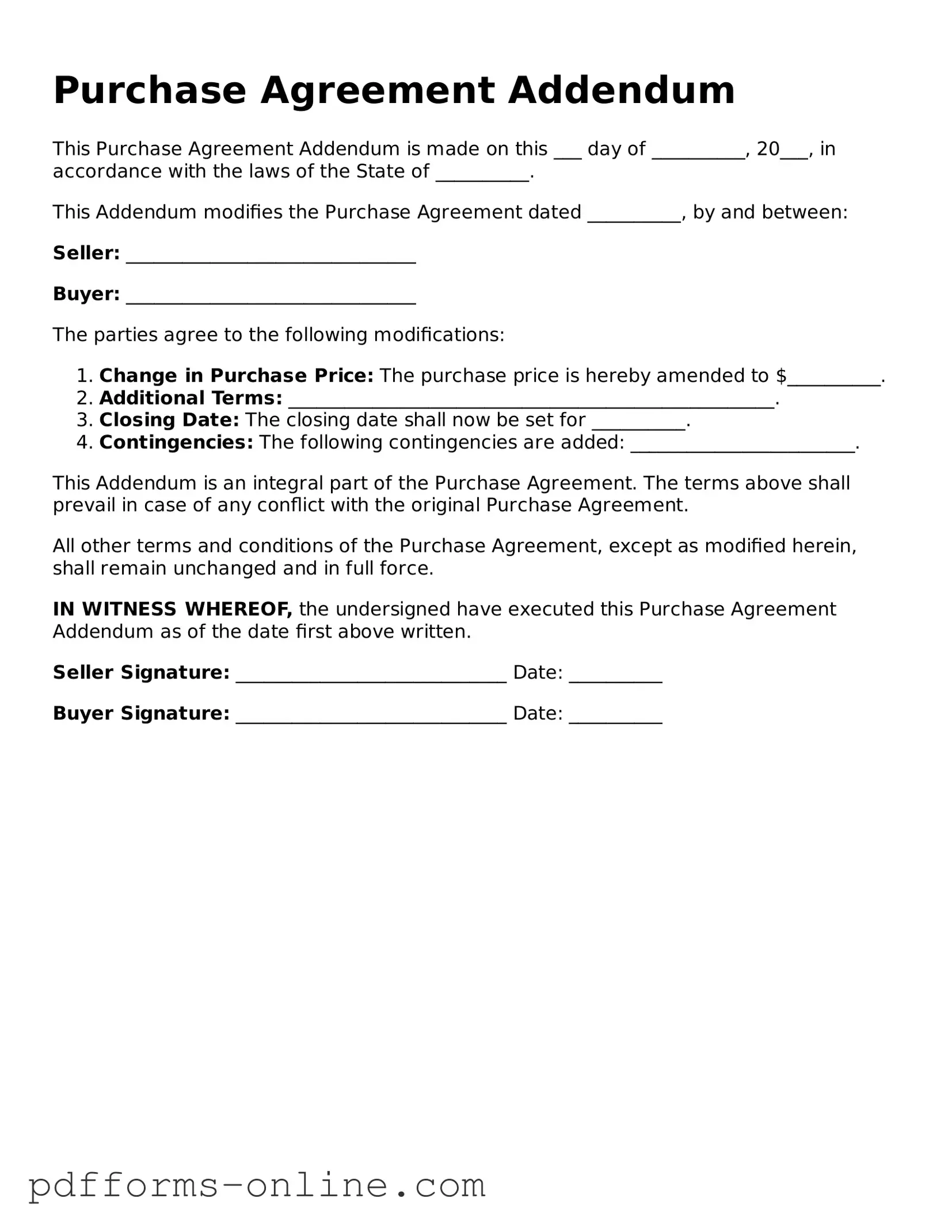Purchase Agreement Addendum
This Purchase Agreement Addendum is made on this ___ day of __________, 20___, in accordance with the laws of the State of __________.
This Addendum modifies the Purchase Agreement dated __________, by and between:
Seller: _______________________________
Buyer: _______________________________
The parties agree to the following modifications:
- Change in Purchase Price: The purchase price is hereby amended to $__________.
- Additional Terms: ____________________________________________________.
- Closing Date: The closing date shall now be set for __________.
- Contingencies: The following contingencies are added: ________________________.
This Addendum is an integral part of the Purchase Agreement. The terms above shall prevail in case of any conflict with the original Purchase Agreement.
All other terms and conditions of the Purchase Agreement, except as modified herein, shall remain unchanged and in full force.
IN WITNESS WHEREOF, the undersigned have executed this Purchase Agreement Addendum as of the date first above written.
Seller Signature: _____________________________ Date: __________
Buyer Signature: _____________________________ Date: __________
